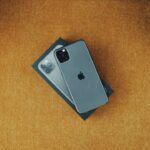When it comes to digital photography, the loss of cherished images can be a devastating experience. Understanding the nature of the damage is the first step in addressing the issue. Photos stored on an iPhone can be lost due to various reasons, including accidental deletion, software corruption, hardware failure, or even physical damage to the device itself.
Each of these scenarios presents unique challenges and requires a tailored approach to recovery. For instance, if a user accidentally deletes a photo, the image may still reside in a temporary storage area, making it potentially recoverable. Conversely, if the device has suffered physical damage, such as from water exposure or a drop, the recovery process may be more complex and may require specialized tools or services.
Moreover, the type of storage used by iPhones can also influence the extent of damage. iPhones utilize flash memory, which is different from traditional hard drives. Flash memory can sometimes retain data even after deletion, but it is also susceptible to wear and tear over time.
Understanding how data is stored and deleted on these devices can provide insight into the likelihood of successful recovery. For example, when a photo is deleted, the space it occupied is marked as available for new data, but until that space is overwritten, there may still be a chance to recover the lost image. This highlights the importance of acting quickly after realizing that photos have been lost.
Key Takeaways
- Accidental deletion, water damage, and software issues are common causes of photo loss on iPhones.
- Options for recovery include using iCloud, iTunes, or third-party software, or seeking professional help.
- Professional help may be necessary for physical damage or complex software issues.
- DIY methods for recovering photos include checking recently deleted albums and using third-party apps.
- Software like Dr. Fone, EaseUS MobiSaver, and Stellar Data Recovery can help retrieve lost photos from iPhones.
Assessing the options for recovery
Once the nature of the damage has been understood, the next step is to assess the available options for recovery. The approach taken will largely depend on the specific circumstances surrounding the loss of photos. For instance, if the photos were deleted recently and no new data has been written to the device, there may be straightforward methods available for recovery.
Users can explore built-in features such as the “Recently Deleted” album in the Photos app, which retains deleted images for up to 30 days before permanently removing them from storage. This feature provides a simple and effective way to recover lost photos without needing additional tools or services. In cases where photos are not found in the “Recently Deleted” folder, users may need to consider more advanced recovery options.
This could involve using third-party recovery software designed specifically for iOS devices. These applications often scan the device’s storage for remnants of deleted files and can sometimes recover images that are not accessible through standard means. However, it is crucial to choose reputable software to avoid further complications or data loss.
Additionally, if the device has sustained physical damage or if software issues are suspected, seeking professional help may be necessary. Understanding these options allows users to make informed decisions about how best to proceed with their recovery efforts.
Seeking professional help

In situations where DIY methods fail or when dealing with significant hardware issues, seeking professional help becomes essential. Data recovery specialists possess the expertise and tools necessary to recover lost photos from damaged devices. These professionals often work in specialized labs equipped with advanced technology that can access and retrieve data from malfunctioning hardware.
For example, if an iPhone has been exposed to water damage, a professional service may employ techniques such as ultrasonic cleaning and chip-off recovery to salvage data that would otherwise be irretrievable. Moreover, professional services can provide a level of assurance that DIY methods cannot guarantee. Many reputable data recovery companies offer no-data, no-fee policies, meaning that users only pay if their data is successfully recovered.
This can alleviate some of the financial concerns associated with professional recovery services. However, it is important for users to conduct thorough research before selecting a service provider. Reading reviews and checking credentials can help ensure that they are entrusting their device to a reliable expert who will handle their data with care.
DIY methods for recovering photos
| DIY Methods for Recovering Photos | Pros | Cons |
|---|---|---|
| Using Photo Recovery Software | Easy to use, can recover a wide range of file types | May not be effective for all data loss scenarios |
| Checking Backup Devices | Likelihood of finding lost photos if backups are up to date | Time-consuming process, may not have recent photos |
| Utilizing Cloud Storage Services | Accessible from anywhere, may have automatic photo backup | Dependent on internet connection, limited storage space |
| Seeking Professional Data Recovery Services | Higher chance of successful recovery, expertise in handling data loss | Costly, may require sending storage device to a recovery center |
For those who prefer a hands-on approach or are looking to save on costs, there are several DIY methods available for recovering lost photos from an iPhone. One of the first steps users can take is to check their iCloud account if they have enabled iCloud Photo Library. This feature automatically backs up photos and videos to Apple’s cloud storage service, allowing users to access their images from any device with internet connectivity.
By logging into iCloud.com or using the Photos app on another Apple device, users can often find their lost images safely stored in the cloud. Another effective DIY method involves using iTunes or Finder backups. If users regularly back up their iPhones using iTunes (or Finder on macOS Catalina and later), they may be able to restore their device to a previous state where the lost photos were still present.
This process involves connecting the iPhone to a computer and selecting the appropriate backup file for restoration. However, it is important to note that restoring from a backup will overwrite current data on the device, so users should weigh this option carefully before proceeding.
Using software to retrieve photos
When traditional methods do not yield results, utilizing specialized software designed for photo recovery can be an effective alternative. Numerous applications are available that cater specifically to iOS devices and offer features aimed at recovering lost images. These programs typically work by scanning the device’s storage for deleted files and presenting users with a list of recoverable items.
Some popular options include Dr.Fone, EaseUS MobiSaver, and Tenorshare UltData. The effectiveness of these software solutions can vary based on several factors, including how long ago the photos were deleted and whether new data has been written to the device since then. Many of these applications offer free trials that allow users to see what files can potentially be recovered before committing to a purchase.
It is advisable for users to read reviews and conduct research on different software options to find one that best suits their needs and offers reliable results.
Backing up your photos in the future

Cloud Storage Options
One popular method is utilizing cloud storage services such as Google Photos or Dropbox, which offer automatic backup features that sync images as they are taken.
Local Backups
In addition to cloud-based solutions, local backups can also play a crucial role in safeguarding photos. Users can connect their iPhones to a computer and use iTunes or Finder to create periodic backups of their entire device, including photos and videos.
A Dual Approach to Security
This dual approach—combining both cloud storage and local backups—provides an added layer of security against data loss due to hardware failure or accidental deletions.
Preventing future damage to your iPhone
Preventing future damage to an iPhone is equally important in ensuring that photos remain safe and accessible. One of the most effective ways to protect an iPhone from physical damage is by investing in a high-quality case that offers shock absorption and water resistance. Cases designed specifically for iPhones can provide significant protection against drops and spills, reducing the likelihood of hardware failure that could lead to data loss.
Additionally, users should be mindful of their device’s software health by keeping it updated with the latest iOS versions. Software updates often include security patches and bug fixes that enhance overall performance and stability. Regularly updating apps can also prevent compatibility issues that might arise from outdated software versions.
By taking proactive measures to protect both hardware and software components of their devices, users can significantly reduce the risk of encountering issues that could jeopardize their photo collections.
the importance of regular backups
In an age where digital photography plays an integral role in capturing life’s moments, understanding how to recover lost photos from an iPhone is crucial for preserving memories. Whether through professional services or DIY methods, there are various avenues available for retrieving lost images after damage occurs. However, these recovery efforts underscore a more significant lesson: the importance of regular backups cannot be overstated.
Establishing a consistent backup routine not only safeguards against accidental deletions but also provides peace of mind knowing that cherished memories are secure. By combining cloud storage solutions with local backups and taking preventive measures against potential damage, users can ensure that their photo collections remain intact for years to come. In this digital age, where memories are often captured in pixels rather than prints, prioritizing data protection is essential for every smartphone user.
If you are looking for ways to retrieve pictures from a broken iPhone, you may find the article on Get iPhone Info helpful. This website offers valuable information on troubleshooting iPhone issues and provides step-by-step guides on how to recover data from a damaged device. Check out their website for more tips and tricks on iPhone repair and maintenance.
FAQs
What should I do if my iPhone is broken and I need to retrieve pictures from it?
If your iPhone is broken, the first step is to assess the extent of the damage. If the screen is cracked but the phone still turns on, you may be able to retrieve the pictures using a computer and a USB cable. If the phone is completely unresponsive, you may need to seek professional help from a phone repair service.
Can I retrieve pictures from a broken iPhone without professional help?
In some cases, you may be able to retrieve pictures from a broken iPhone without professional help. If the phone still turns on and the screen is functional, you can connect it to a computer and use iTunes or a third-party software to extract the pictures. However, if the phone is completely unresponsive, it may be necessary to seek professional help.
Is it possible to retrieve pictures from a water-damaged iPhone?
If your iPhone has been water-damaged, it may still be possible to retrieve pictures from it. The first step is to let the phone dry completely before attempting to turn it on. If the phone still works, you can connect it to a computer and use iTunes or a third-party software to extract the pictures. If the phone is unresponsive, professional help may be necessary.
What are the options for retrieving pictures from a broken iPhone?
The options for retrieving pictures from a broken iPhone depend on the extent of the damage. If the phone is still functional, you can connect it to a computer and use iTunes or a third-party software to extract the pictures. If the phone is unresponsive, you may need to seek professional help from a phone repair service.
Can I retrieve pictures from a broken iPhone without a backup?
If your iPhone is broken and you do not have a backup of the pictures, it may still be possible to retrieve them. If the phone is still functional, you can connect it to a computer and use iTunes or a third-party software to extract the pictures. If the phone is unresponsive, professional help may be necessary to retrieve the pictures.










